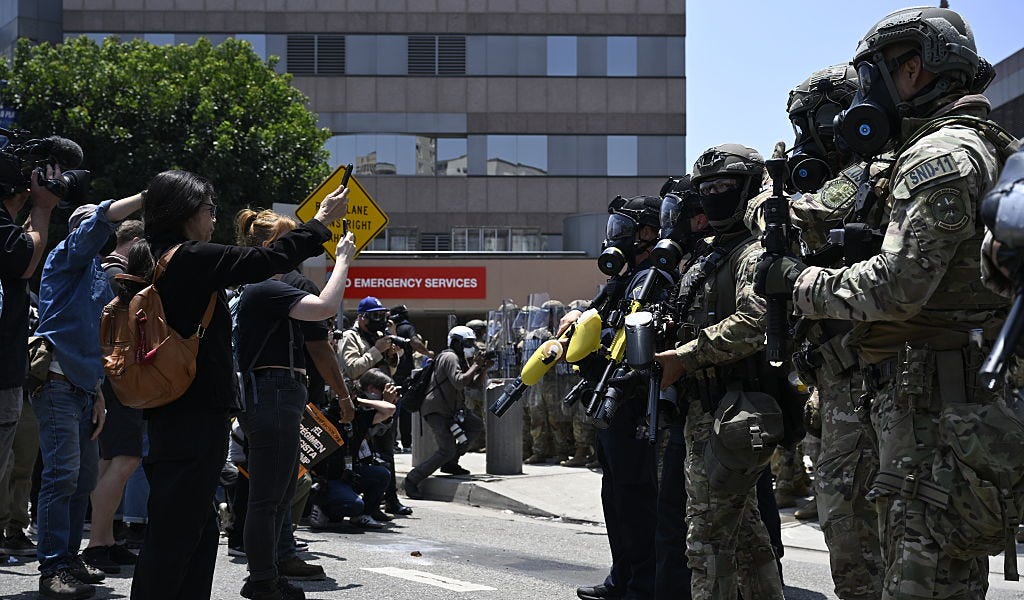Spend the night with us in one of D.C.’s nightlife hubs, as federal police roam, crowds are smaller, bartenders worry and clubgoers try to enjoy themselves.
The sunlight dimmed along this stretch of U Street to the familiar soundtrack of a city ready for the weekend: rumbling buses taking home tired commuters, high heels clacking along sticky sidewalks and chattering crowds ready to order their first round.
Then a group gathered on a street corner with pots and pans, jingling them as the darkness grew closer. They whooped and cheered for a few minutes, a brief moment of joyful resistance seeking to counteract the image of the crime-ridden city described by the president.
Among the clubgoers in miniskirts and sweat-soaked T-shirts, there were federal agents hopping in and out of unmarked cars. A protester held a sign reading “America has no kings.” Police officers were met with boos and phones ready to record.
Welcome to the first Friday night in D.C. since President Donald Trump announced he was placing the local police under federal control and sending in National Guard troops to a city where 9 in 10 voters cast ballots for his opponent. The next morning, the White House would announce that the overnight operation yielded 52 arrests and the seizure of three illegal firearms. Twenty-two multiagency teams were deployed throughout the city.
Trump justified the exertion of executive power to reduce crime by depicting the city as a lawless wasteland, despite violent crime reaching 30-year lows. But many of those gathered around the bars and clubs in Northwest Washington on Friday night said they felt more unsettled by the federal presence than any other safety concerns.
Washington Post journalists spent Friday night in a popular section of U Street — a nightlife hub that is among the areas of the city with the highest number of crimes reported this year. Earlier this summer, D.C. police implemented a youth curfew over concerns about rowdy crowds in some areas.
Nearby, two nights earlier, a mix of local and federal authorities pulled over drivers for seat belt violations or broken taillights while onlookers chanted: “Go home, fascists.”
On Friday, crowds were smaller, bartenders and club managers said, and they wondered if patrons were staying inside to avoid federal authorities. And yet, there were still people ready to party.
The largest police response The Post witnessed Friday night was over a claim of a stolen bike. It was around 8:30 p.m., and the sky was ink blue.
One couple heading home from an event at a nearby synagogue looked on with furrowed brows. They spotted a few D.C. police cruisers blocking traffic and agents donning vests labeled “HSI” — Homeland Security Investigations. They hadn’t seen that before, not here.
A pair of French tourists, in D.C. for the first time and looking for a bar, paused when they saw the police cruisers and growing crowd. Earlier, they had strolled by the White House and marveled at the Capitol, and now they were trying to make sense of the flashing lights.
They had loosely followed the week’s headlines and were still thrilled to be visiting.
“We’re on vacation, so we try to cut [out] the news,” Solène Le Toullec said, and they walked on.
At the sight of local and federal law enforcement throughout the night, people pooled on the sidewalk — watching, filming, booing.
“Get out!”
“Go!”
“Quit!”
Such interactions played out again and again as the night drew on. Onlookers heckled the police as they did their job and applauded as officers left.
…
Click the links below to read the rest:
https://www.msn.com/en-us/news/us/a-night-in-d-c-after-trump-s-national-guard-deployment/ar-AA1KFJnn

